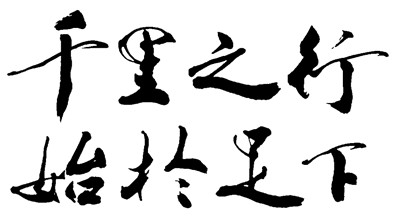(单词翻译:单击)
听力训练
Exercise
1. According to the passage, what is penmanship?
2. What was the author doing years ago?
3. When do people consider teaching penmanship to be waste of time?
4. Back then, was often taught as a separate subject from the first grade thought the sixth grade the children had moved from writing in block capital letters to cursive .
5. With , they say, children can successfully the keyboard or mouse of their home computers before they can even . This change had an impact on the classroom.
6. But after this, the makes no further mention of penmanship in grade five, six or beyond, any of quality or neatness is simply not among the curricular objectives. Your is to look at what the curricular standards say for all fifty states say about penmanship.

Words & Phrases
Words:
arithmetic 算术
penmanship 书法
Phrases:
A few decades 几十年
a waste of time 浪费时间
be awarded for... 因......被奖励
call for 要求,提倡
have an impact on... 对......有影响
make no mention of... 没有提到......
move ahead 向前推移
move from... to... 从......移到......
Sentence Pattern 句型
1. It went without saying that writing meant first and foremost penmanship 毫无疑问,写作最重要的是书法。
It goes without saying that... ......是毋庸置疑的。
听力答案
参考答案:
1. The quality of one's handwriting.
2. Studying education in college.
3. In the 1980s.
4. penmanship, right up, long after, script
5. computers, manipulate, hold a pencil, in attitude
6. curriculum, higher level, assignment
听力原文
Teaching Penmanship
As you prepare to become elementary school teachers, you'll be hearing a lot of disscussion about the relevance of teaching permanship, the qulity of one's handwriting.
Now years ago when I was studying education in college, reading, writing and arithmetic were the basic of elementary school education. It went without saying that writing meant first and foremost penmanship. That is, the neatness of a child's handwriting. Back then, penmanship was often taught as a separate subject from the fist grade right up through the sixth grade long after the children had moved from writing in block capital letters to cursive scipt. It was considered so important that sometimes prizes were even awarded for the best handwriting.
But when we move ahead a few decades into the 1980s, we see teachers and administrators and even parents telling us that teaching penmanship is waste of time.With computers, they said, children can successfully manipulate the keyboard or mouse of their home computers before they can even hold a pencil. This change in attitude had an impact on the classroom. In your homework for this week you'll be looking at what statewide curriculum standards in the US say about penmanship.You'll see that in many states penmanship hasbeen de-emphasized in a required curriculum, especially in the later years of elementary school. In California, for example, the curriculum calls for fourth-grade students to ... and I quote," write fluently and legibly in cursive or grades. But after this, the curriculum makes no further mention of penmanship in grade five, six or beyond, any higher level of quality or neatness is simply not among the curricular objectives. Your assignment is to look at what the curricular standards say for all fifty states say about penmanship.
参考译文
书法教学
在你准备做一名小学教师之前,你会听到许多有关书法教学的讨论:一个人的书写质量。
几年前当我还是大学里一名教育学专业的学生的时候,阅读、写作和算术是小学教育的基础课程。毫无疑问,写作最重要的是书法。也就是说,孩子的书写要整洁。当时,书法从一年级一直到六年级都是一门独立的科目,直到很久以后孩子们由书写正楷转到书写草书。有时候书写好的孩子会受到奖励,而人们把这些看得很重要。
但是如果往前推到上世纪80年代,老师和学校的其他管理人员甚至父母都会告诉我们,书法教学是在浪费时间。他们认为,有了计算机,孩子们在会拿笔之前就可以很熟练地使用家里的键盘和鼠标。这一态度的转变影响了教学。在这周的家庭作业里,你将看到美国关于书法课程的标准。你会发现,在许多州,必修课里的书法课是不受重视的,特别是在小学高年级。比如,加利福尼亚州的课程要求四年级学生流利清晰的书写或评分。但在五年级、六年级或者以后,书法的课程要求就不再被提及,而对于书写质量以及整齐程度的更高要求已不再是这一课程的目的了。你的任务就是看50个州的书法课程标准是什么。


